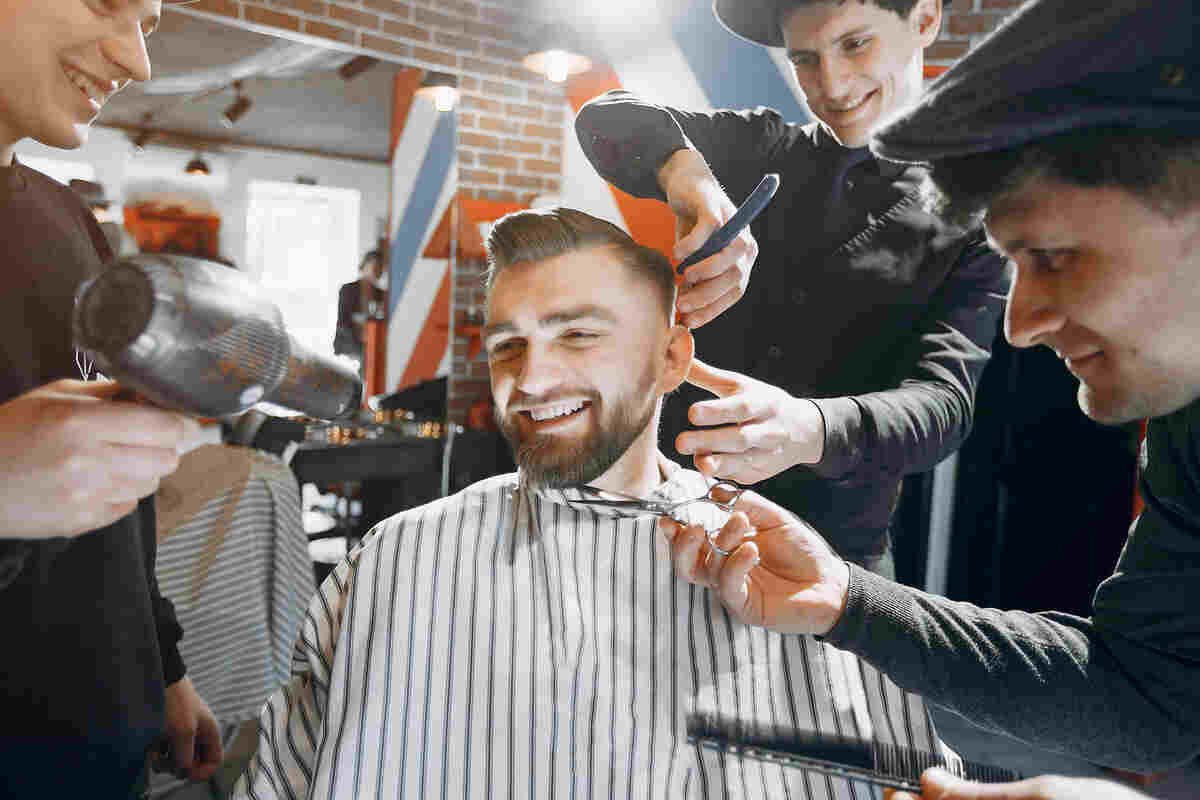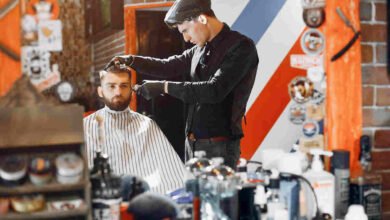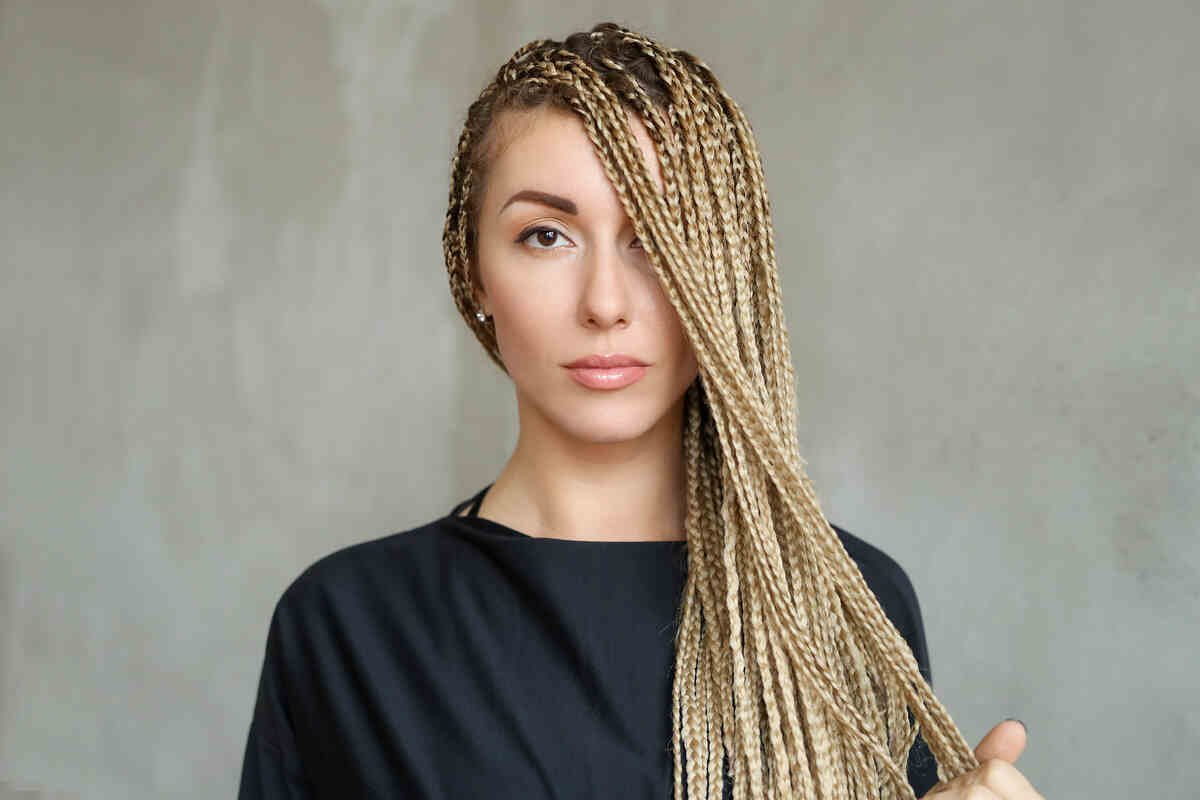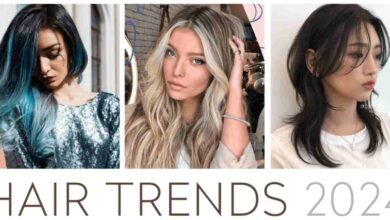Hair Cutting: Enhancing Your Look with Precision and Style

Hair cutting is more than just trimming your hair; it’s a form of art that can transform your appearance and boost your confidence. Whether you’re looking for a subtle change or a dramatic makeover, understanding the fundamentals of hair cutting is essential to achieving the desired results.
Introduction to Hair Cutting
Hair cutting is the process of trimming or styling hair to create a desired look. It involves various techniques, tools, and skills to achieve precision and symmetry. From classic cuts to trendy styles, hair cutting offers endless possibilities for self-expression and creativity.
Importance of Professional Hair Cutting
Professional hair cutting is paramount for several reasons. Firstly, the expertise and experience of professional hairstylists ensure that you receive top-notch service tailored to your unique needs. Their in-depth knowledge of hair types, textures, and styles enables them to recommend the most suitable haircut for you. Secondly, professional hair cutting guarantees precision and accuracy. Hairstylists use specialized tools and techniques to achieve even cutting and precise shaping, resulting in a refined and well-groomed appearance.
Moreover, professional hairstylists offer customization, taking into account factors such as your face shape and personal style preferences. This personalized approach ensures that your haircut enhances your features and complements your overall look, boosting your confidence. Additionally, professional hair cutting produces long-lasting results that grow out gracefully, reducing the need for frequent touch-ups or corrections. Furthermore, by using high-quality products and techniques, hairstylists promote the health and vitality of your hair, leaving it looking and feeling its best. Lastly, professional hairstylists provide valuable advice on hair care and maintenance, empowering you to maintain salon-worthy results at home. In essence, professional hair cutting is indispensable for achieving a flawless haircut and maintaining the health and beauty of your hair.
Different Hair Cutting Techniques
Hair cutting encompasses a wide range of techniques, each designed to achieve specific styles and effects. Some popular hair cutting techniques include:
- Layered Haircuts: Layered haircuts involve cutting the hair at different lengths to create layers and texture. This technique adds volume and movement to the hair, making it ideal for thin or flat hair.
- Bob Haircuts: Bob haircuts are characterized by a blunt or graduated cut that frames the face. This timeless style offers versatility and can be customized to suit various hair textures and lengths.
- Pixie Cuts: Pixie cuts are short, cropped hairstyles that exude confidence and edginess. This bold style accentuates facial features and requires minimal maintenance, making it perfect for busy individuals.
- Fade Haircuts: Fade haircuts feature a gradual tapering of hair length, creating a seamless transition from short to long hair. This versatile style is popular among men and can be customized with different fade lengths and textures.
Tools Required for Hair Cutting
Hair cutting requires a variety of tools to achieve professional results. These tools are essential for precision cutting and styling. Firstly, sharp scissors are a fundamental tool used by hairstylists to trim and shape the hair accurately. High-quality scissors ensure clean cuts without causing damage to the hair. Additionally, clippers are used for cutting hair to a uniform length, especially for shorter hairstyles or fades. Clippers come with different guard sizes to adjust the length of the hair accordingly. Combs are another indispensable tool for hair cutting, used to section the hair and create clean partings for precise cutting.
They also help in detangling the hair and distributing products evenly. Furthermore, razors are utilized for texturizing and adding softness to the hair, particularly for layered or textured styles. Thinning shears are specialized scissors with teeth that are used to remove bulk from the hair and create a softer, more blended look. Lastly, hair cutting capes and clips are essential for protecting the client’s clothing and securing sections of hair during the cutting process. Overall, these tools are indispensable for hairstylists to execute various cutting techniques and achieve impeccable results.
Step-by-Step Guide to Hair Cutting
- Preparation: Before starting the hair cutting process, it’s essential to wash and condition the hair to remove any product buildup and ensure smooth cutting. Additionally, gather all the necessary tools and ensure proper lighting and ventilation in the workspace.
- Sectioning the Hair: Divide the hair into manageable sections using clips or hair ties to ensure even cutting and maintain control over the hair. Start with the bottom sections and work your way up to the top, following the natural hair growth pattern.
- Cutting Technique: Choose the appropriate cutting technique based on the desired style and hair texture. Use sharp scissors or clippers to trim the hair gradually, making small adjustments as needed to achieve the desired length and shape.
- Blending: After cutting the hair, use blending techniques such as texturizing or feathering to remove any harsh lines and create a seamless transition between different sections of the hair. This step is crucial for achieving a natural and polished look.
Maintenance Tips for Hair After Cutting
After getting a haircut, it’s essential to follow proper maintenance to keep your hair looking fresh and healthy.
- Regular Washing: Wash your hair regularly with a gentle shampoo and conditioner to keep it clean and free of dirt and product buildup. Choose products specifically formulated for your hair type to ensure optimal results.
- Hydration: Hydrate your hair by using a moisturizing conditioner or hair mask regularly. This helps replenish moisture lost during washing and styling, keeping your hair soft, smooth, and manageable.
- Avoid Heat Styling: Limit the use of heat styling tools such as blow dryers, straighteners, and curling irons, as excessive heat can damage the hair and cause split ends. If you must use heat styling tools, apply a heat protectant spray to minimize damage.
- Trimming: Schedule regular trims every 4-6 weeks to maintain the shape and health of your haircut. Trimming the ends prevents split ends from traveling up the hair shaft and keeps your hair looking neat and well-groomed.
- Protective Styling: Consider protective hairstyles such as braids, buns, or updos to minimize exposure to environmental factors that can damage your hair, such as sun, wind, and pollution.
- Use Hair Oil: Incorporate a nourishing hair oil into your routine to add shine, smoothness, and hydration to your hair. Massage the oil into your scalp and hair strands to promote circulation and stimulate hair growth.
- Avoid Overwashing: While it’s essential to keep your hair clean, avoid overwashing, as it can strip the hair of its natural oils and lead to dryness and damage.
- Protect from Chlorine and Saltwater: If you swim regularly, protect your hair from chlorine and saltwater by wearing a swim cap or applying a leave-in conditioner before swimming. Common Mistakes to Avoid
Avoid common hair cutting mistakes such as cutting too much hair at once, using dull scissors, or neglecting proper sectioning and technique. These mistakes can result in uneven or botched haircuts and may require professional correction.
Benefits of Regular Haircuts
Regular haircuts offer numerous benefits that contribute to the overall health and appearance of your hair. Firstly, regular trims help to prevent split ends, which occur when the hair shaft splits due to damage or dryness. By removing these split ends, your hair looks smoother, healthier, and more manageable. Additionally, regular haircuts promote healthy hair growth by eliminating damaged or weakened hair, allowing new, stronger strands to grow in their place. Moreover, getting a haircut regularly helps to maintain the shape and style of your hair.
Over time, hair can become uneven or lose its intended shape, but regular trims keep your hairstyle looking fresh and polished. Furthermore, regular visits to the salon give you the opportunity to consult with your hairstylist about any concerns or desired changes to your hair. Whether you’re looking to try a new style or address specific issues like thinning or breakage, your hairstylist can provide personalized advice and recommendations. Finally, regular haircuts contribute to your overall well-being by boosting your confidence and self-esteem. When your hair looks good, you feel good, and regular trims ensure that you always look and feel your best. Overall, the benefits of regular haircuts extend beyond just aesthetics, promoting healthier, happier hair and a more confident you.
Hair Cutting for Different Hair Types
Hair cutting techniques can vary depending on your hair type, texture, and density. Here’s how hair cutting can be tailored to different hair types:
- Straight Hair: For straight hair, precision cutting is key to achieving clean lines and defined shapes. Blunt cuts, such as bobs or blunt bangs, can complement straight hair by enhancing its sleekness and shine. Layered cuts can also add volume and movement to straight hair, creating a fuller, more dynamic look.
- Curly Hair: Curly hair requires special attention when it comes to cutting, as it tends to shrink when dry and can be prone to frizz. To enhance curls and minimize frizz, hairstylists often use techniques such as dry cutting or the DevaCut method, which involve cutting the hair while it’s dry and in its natural state. Layered cuts can help to shape and define curls, while long layers can add volume and reduce bulk.
- Wavy Hair: Wavy hair falls somewhere between straight and curly, offering versatility in styling. For wavy hair, layered cuts are often recommended to enhance the natural texture and movement. Graduated or tapered cuts can also help to create a more defined shape and reduce bulk, especially for thicker wavy hair.
- Thick Hair: Thick hair can be challenging to manage, but the right haircut can make all the difference. Layered cuts are ideal for thick hair, as they help to remove excess weight and add movement. Long layers can reduce bulk and create a more manageable hairstyle, while short, choppy layers can add texture and dimension.
- Fine Hair: Fine hair lacks volume and can appear flat and lifeless without the right haircut. To add volume and body to fine hair, hairstylists often recommend layered cuts with shorter layers at the crown and longer layers throughout. Blunt cuts should be avoided, as they can make fine hair look even thinner.
- Coarse Hair: Coarse hair tends to be thick and textured, requiring extra care when cutting. To tame coarse hair and reduce bulk, hairstylists often use techniques such as point cutting or slide cutting to soften the edges and create a more natural look. Layered cuts can also help to lighten coarse hair and enhance its movement.
Finding the Right Hairstyle
Finding the right hairstyle involves considering factors such as face shape, hair texture, and personal style preferences. Experiment with different styles and consult with a hairstylist to find the perfect haircut that complements your features and enhances your overall look.
Hair Cutting for Different Face Shapes
Hair cutting is not a one-size-fits-all approach; it should be tailored to complement your unique facial features and shape. Here’s how hair cutting can enhance different face shapes:
- Round Face: For round faces, hairstyles that add height and elongate the face are ideal. Consider long layers or a layered bob to create the illusion of length. Side-swept bangs or a deep side part can also help to slim the face and add definition.
- Oval Face: Oval faces are considered the most versatile, as they can pull off a variety of hairstyles. However, to enhance an oval face shape, opt for hairstyles that maintain balance and proportion. Soft, face-framing layers or a shoulder-length cut work well to highlight your features without overwhelming your face shape.
- Square Face: Square faces are characterized by strong, angular jawlines and equally wide cheekbones. To soften these features, choose hairstyles that add softness and movement. Consider textured layers, side-swept bangs, or a soft, layered bob to soften the angles and create a more balanced look.
- Heart-Shaped Face: Heart-shaped faces are wider at the forehead and taper down to a narrower chin. To balance this shape, opt for hairstyles that add volume and width at the jawline. Layered cuts, long side-swept bangs, or chin-length bobs with soft layers can help to create symmetry and complement your facial structure.
- Diamond Face: Diamond-shaped faces have narrow foreheads and chins with wide cheekbones. The goal with this face shape is to soften the angles and create width at the forehead and chin. Consider hairstyles with layers or soft, side-swept bangs to add volume and balance to the face. Avoid hairstyles with too much volume at the cheekbones, as this can accentuate the width of the face.
- Rectangle Face: Rectangle faces are longer than they are wide, with straight cheekbones and a squared jawline. The aim with this face shape is to add width and volume to the sides of the face to create balance. Choose hairstyles with layers, waves, or curls to add volume and softness. Avoid hairstyles that are excessively long and straight, as they can elongate the face further.
Conclusion
Hair cutting is not just about trimming hair; it’s about creating a look that reflects your personality and enhances your overall appearance. Whether you prefer classic styles or trendy cuts, professional hair cutting offers endless possibilities for self-expression and confidence.





